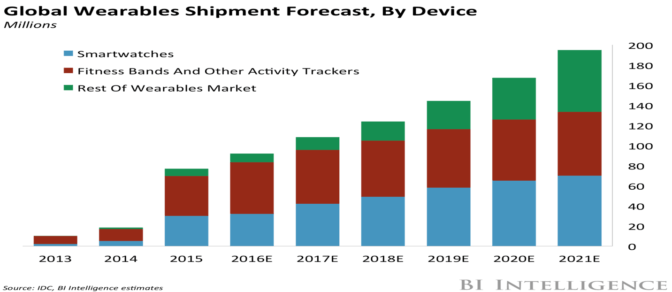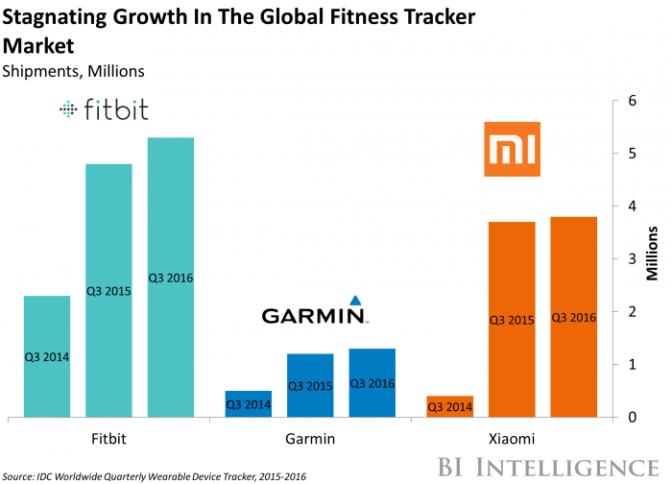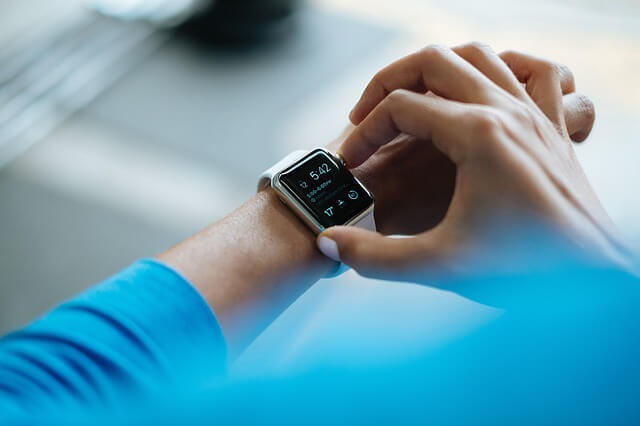How does the future look for digital health wearables market?
The term wearable typically refers to devices that can be worn on the body. Consequently, digital wearable devices are technologies that have been modified and incorporated into devices that can be worn. Advancement in technology has led to the development of different wearable devices for health improvement purposes. These devices are designed with the capabilities to communicate with a person’s physiological system.
Some of these devices are designed to read the status of a person’s health; while some others are designed for detection purposes.
Some wearable devices such as the fitness tracking glasses, the Kokoon sleep enhancement device, and xmetrics for swimmers and lots more are built to monitor are built to monitor heart rate, blood pressure, burn calorie and keep a record of steps walked among others.
The incorporation of technology into wearable devices is mainly aimed at creating portable but sophisticated devices that are wearable with more sophisticated function than most handheld devices such as the mobile phones and laptop computer. The sophistication of the wearable technology lies in its ability to read data from the body of the person wearing it. Some of these wearable devices include glasses, e-textile, smart fabrics, rings, bracelets, and caps. The market share of these wearable devices indicates that Google has the highest market share of 33.53%.

Image courtesy of Pinterest
Wearable technology has been incorporated and widely accepted by many industries which include the healthcare and medical, fitness and wellness, information and military. Some major players pioneering the technology include Samsung, Apple, Nike, Epson, LG, and Microsoft. Wearable devices have indicated a very promising market as records have shown that the total number of wearable devices connected worldwide is projected to rise from the recorded 325 million devices in 2016 to over 830 million devices by the year 2020.

Image courtesy of Business Insider
With over 70 startups in the level of investment in wearable devices has been on the increase and is set to for further increments. As a result, the number of wearables shipped globally particularly smart watches; fitness brands and other healthcare wearable are projected to significantly increase by the year 2021.
A critical analysis of the digital health wearables market
Several of these wearable devices are basic devices that are frequently used, however, in terms of the nature of their functionality, some of them can be considered as useless.
This is because; the effects or impacts of the functions of some of these devices are not very relevant to the promotion of the general wellbeing of a person.
Examples of some of these devices whose function may not be very useful are the digital watch that calculates total distance travelled. This information appears impressive but it is not actually vital to a person’s wellbeing. Consequently, in the long run, the summation of these data becomes virtually useless to the person wearing the device. Another set of devices that are actually useless are the smart jewellery devices. These devices are worn especially by ladies primarily to inform the users of emails, text, and calls.
These functions are quite smart but are duplicated functions of the smartphones, hence in the long run; due to the expensive nature of these devices, people will soon prefer to use their smartphones which offers the same functions. Another is the BabyCenter app which is designed to keep track of pregnancy progressions. The device is quite nice but in the long run, it can be done without and still have good pregnancy progression level.
Most of the wearable devices have raised the hopes of their users beyond their capabilities. This poses a great threat to the success of these wearable devices.
Additionally, digitization of some normal health parameters could be a reason for the failure of some of these devices. Despite the seeming threat of failure of some of these wearable devices, they still remain very relevant in the healthcare sector because of some crucial applications of these devices. Some of the wearable devices are designed to perform vital health-related functions which include burning of calorie, heart rate, respiratory rate, blood sugar level, blood volume, body temperature and sleep tracker amongst other key functions.
These set of wearable devices are essential to maintaining a very good and sound general wellbeing as they perform key functions that relate to critical health care services.
Wearable market: Future trend
The wearable technology has become a very crucial and vital part of health care delivery because they are designed to provide very key functions towards the enhancement of general health.
Functions such as blood sugar level detection will significantly help people to keep a proper record of their blood sugar level thereby giving them a good chance of avoiding some deadly disease such as diabetes which results from the presence of too much sugar in the blood.
Furthermore, the use of these wearable devices to monitor the blood pressure level of users make it possible to avoid the associated deadly disease of high blood pressure which eventually leads to stroke and other undesirable conditions.
With the level of impact the wearable devices have been able to create in the healthcare sector, several investors have been attracted to participate in the promotion and advancement of this technology. Therefore the wearable market is projected to have a flood of an interested investor in the nearest future.
Records have shown that from the amount of wearable device shipment worldwide, movement tracking devices have been in the lead role among other wearable devices. These devices include the smartwatch technology which among the key players, Apple has taken the lead in the production of these devices. Overall, wearable devices for the promotion of healthcare have been the most used and the set of wearable devices with the most promising future.

Image courtesy of Wearable Technologies
However, the fitness tracking wearable devices have been experiencing a very serious degree of stagnancy and downturn as many users are beginning to find its functions useless.

Image courtesy of Business Insider
The stagnation in the usage of the fitness tracking devices, if continued is projected to cause a major failure to the usage of the wearable fitness tracking devices.
Image credit: www.pixabay.com

















